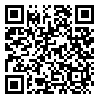Volume 8, Issue 4 (2021)
CLRJ 2021, 8(4): 109-133 |
Back to browse issues page
Download citation:
BibTeX | RIS | EndNote | Medlars | ProCite | Reference Manager | RefWorks
Send citation to:



BibTeX | RIS | EndNote | Medlars | ProCite | Reference Manager | RefWorks
Send citation to:
Ahadi ِ M, Djalili Marand N, Chavoshian S. Cultural Elements in Translation: Translator Approaches. CLRJ 2021; 8 (4) :109-133
URL: http://clrj.modares.ac.ir/article-12-45610-en.html
URL: http://clrj.modares.ac.ir/article-12-45610-en.html
1- Master of French translation, Faculty of Literature, Alzahra University, Tehran, Iran. , mahnaz.ahadi6776@gmail.com
2- Associate Professor, Department of French language, Faculty of Literature, Alzahra University, Tehran, Iran.
3- Assistant Professor, Department of French language, Faculty of Literature, Alzahra University, Tehran, Iran.
2- Associate Professor, Department of French language, Faculty of Literature, Alzahra University, Tehran, Iran.
3- Assistant Professor, Department of French language, Faculty of Literature, Alzahra University, Tehran, Iran.
Abstract: (3439 Views)
Nowadays, experts in the field of translation studies agree that translation is one of the most characteristic patterns of interaction between two cultures that cannot be limited to a purely linguistic process. In the field of translation, theorists such as Berman, Venuti, Schleiermacher, Ricoeur ... emphasize representation and alienation of the other and consider it as a superior strategy. They warn the translator against any "sacredness of the mother tongue" and believe that he should introduce the other culture to the target language readers without any interference. But in reality this is not always the case. Sometimes the translator uses semantic substitution instead of acquainting the destination reader with the foreign culture. Sometimes it even involves deleting and changing content. Can alienation be considered a superior strategy regardless of the situation? What factors prioritize strategies? Is not choosing such a so-called superior strategy simply rooted in the translators' view of the translation process? What factors influence translator choices and differentiate different translations of a work? What effects can these choices have on the target language reader? This article examines the factors affecting translator choices in translating culturally oriented elements. It then examines the impact of these choices on target language readers.
Article Type: Original Research |
Subject:
Adaptive Literature and Translation Studies
Received: 2020/08/29 | Accepted: 2020/12/14 | Published: 2021/01/29
Received: 2020/08/29 | Accepted: 2020/12/14 | Published: 2021/01/29
Send email to the article author
| Rights and permissions | |
 |
This work is licensed under a Creative Commons Attribution-NonCommercial 4.0 International License. |








